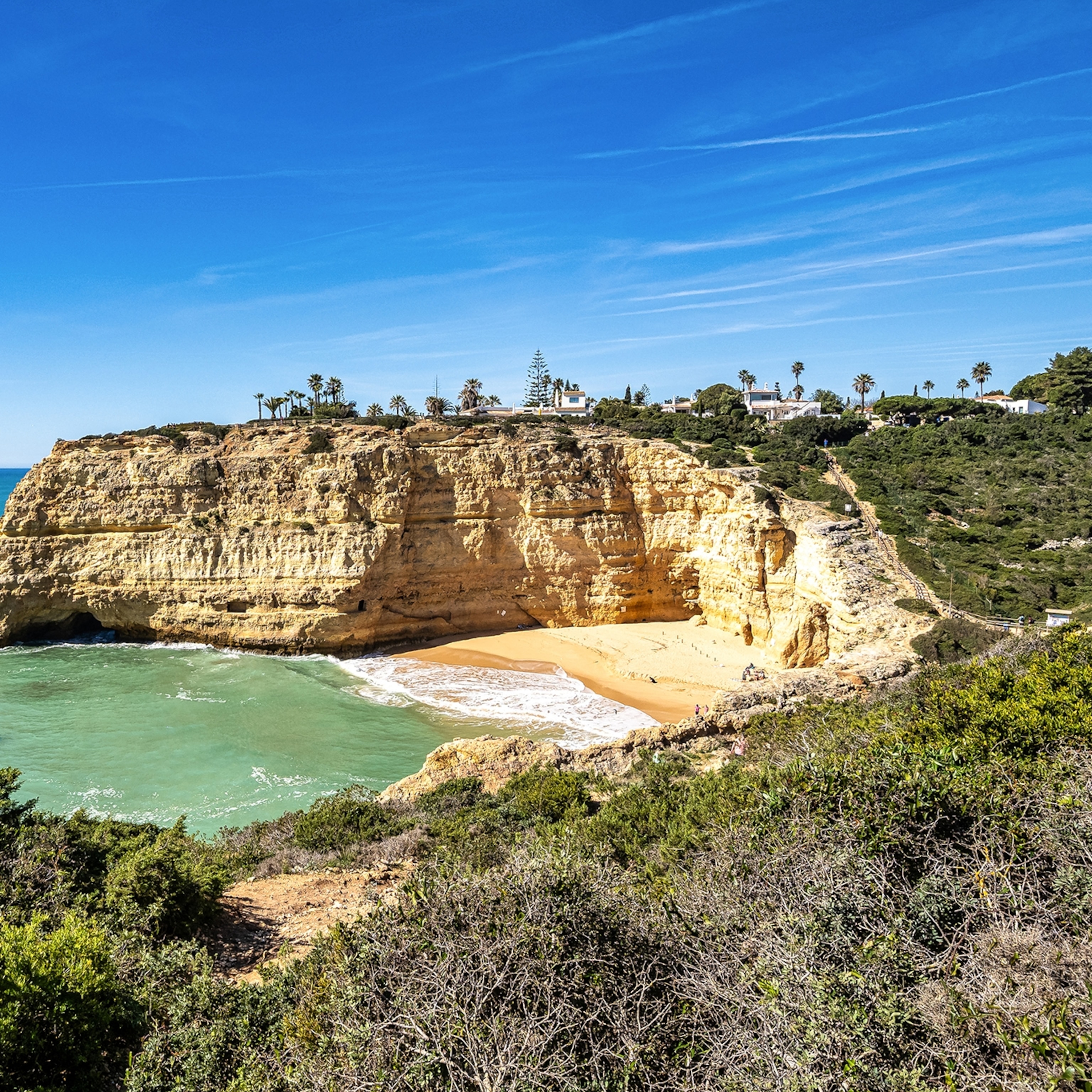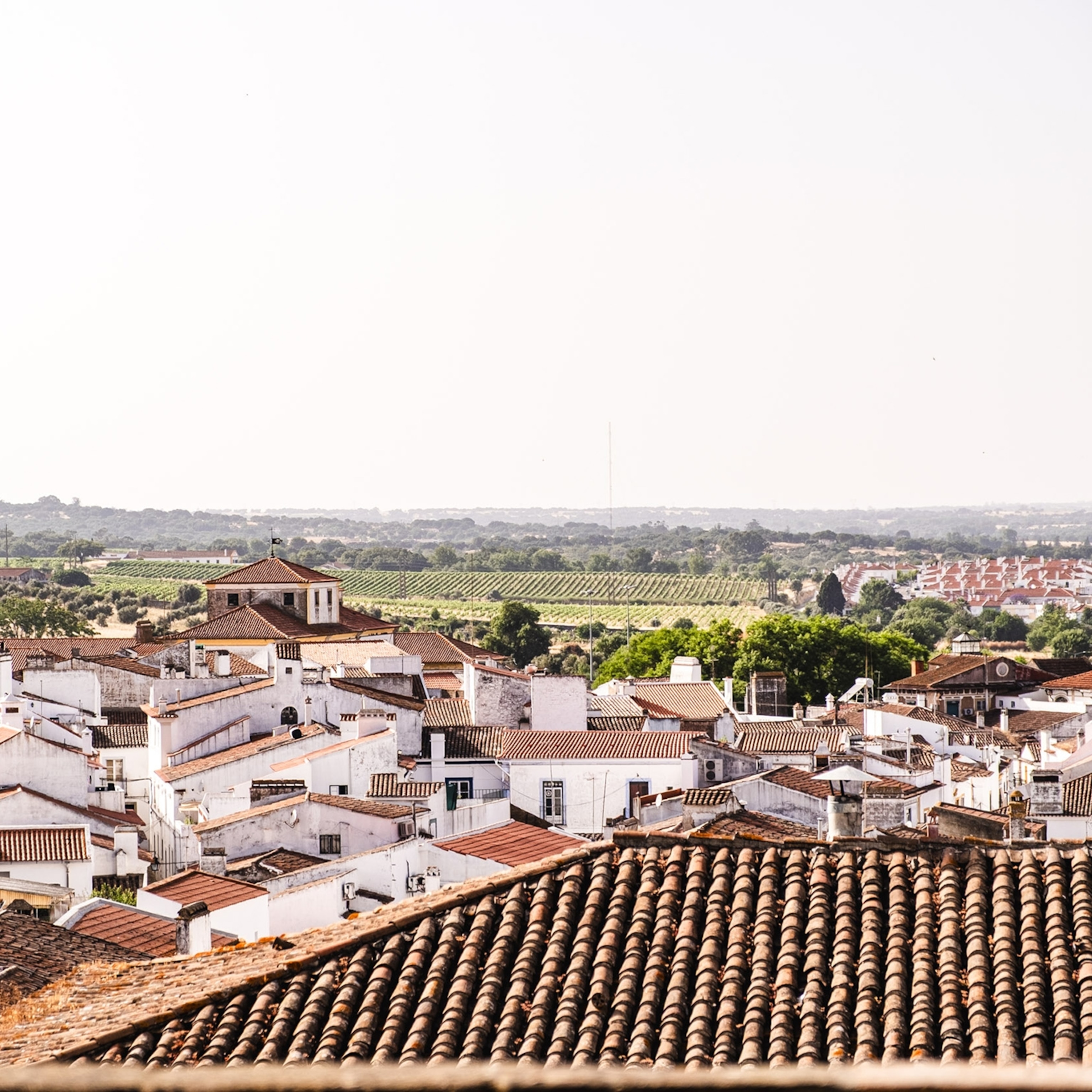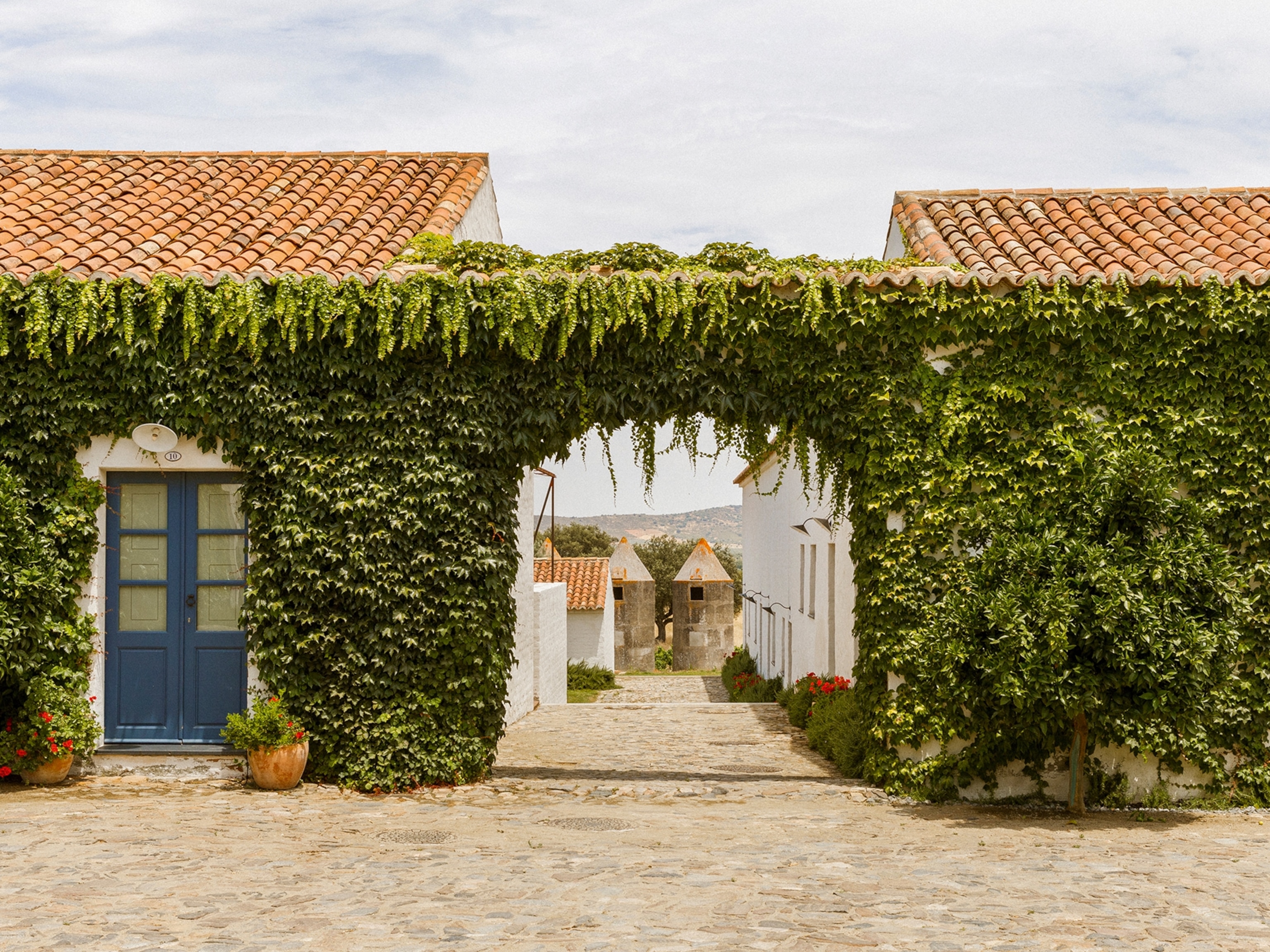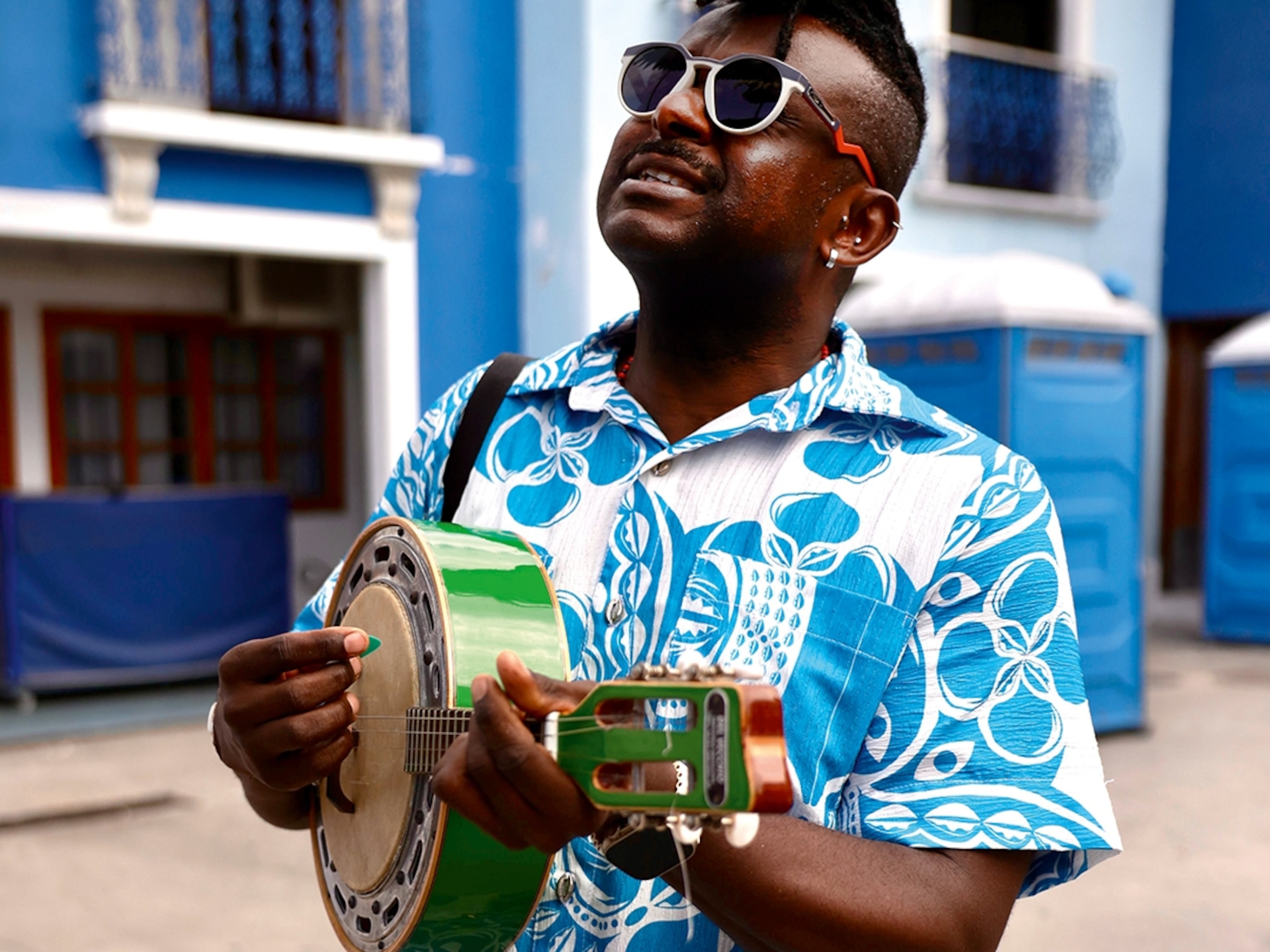
Discovering pagan parades and pyrotechnics as part of Portugal’s ancient mountain carnival
Hidden away in the mountains of northern Portugal, the quiet town of Podence explodes into a riot of pageantry, feasting and bonfires for the ancient Entrudo Chocalheiro carnival.
On the frosted cusp of spring, in the higgledy-piggledy backroads of mountainous northeast Portugal, a town seems to be slipping beyond the pale. I’ve come to Podence for the vernal tradition of Entrudo Chocalheiro, a festival that involves burning effigies, dancing devils and plenty of wine. But child labour? Watching a young child wheedle through a crowded restaurant hall, plates of meat in her arms, I decide that this pagan festival has gone too far. Not really, as it turns out — although I have to admit that for an 11-year-old, Catarina makes a deft waiter.
“It’s my uncle’s barn,” Catarina says, placing a platter of roasted pork in front of me. I’m eating the best way, on long communal tables, with baskets of bread and jugs of wine passed between strangers. “We only make it a restaurant once a year, for the Chocalheiro. Then everything goes back to normal.”
Podence, a town of around 200 people, swells to host this four-day party, which brings thousands from across Portugal and beyond, with many people returning to the town their family left generations ago. The festival marks the retying of old, lost roots, ones that extends into Celtic pre-Roman Portugal.
As lunch winds down, Catarina is in a rush to clear my plate; she must hurry and get into her Careto costume, she tells me. It’s during the afternoon that these masked devils take to the streets en masse. The Caretos are the essence of the Entrudo Chocalheiro, each one a local snug in a onesie of colourful green, yellow and red wool fringes. Behind square-jawed, angular masks made of tin or leather and painted red, their identities are unknown — only a pair of bulging eyes offer the barest glimpse of humanity. That’s the intention: the Careto character is evil incarnate, a mischievous devil-figure linked with fear and danger.
Wearing the skin of the devil
Podence is a farming town, and the ancient festival is nominally about the renewed fertility of the soil. But the sacred and the profane mix easily, and notions of fruitfulness and fertility are loaded with other connotations. For some performers, innuendo is still a key part of becoming a Careto today.
Out on the street, the crowd parts for a Careto bounding over the cobbles, building speed, each step covering a yard or more. It singles out a woman, and vaults up to her, pulling her close around the shoulder and shaking her with a rough, hip-bumping dance. The moment passes and the Careto bounds away down the street.
“During Carnaval, certain behaviours which wouldn’t otherwise be allowed are permitted,” says Luís Filipe, a Podence local who was, he says, “born a Careto.”
“After a long, cold winter in the mountains, people feel the need to release. In times past, Portugal was a very devout place, and it had strict societal practices. Excess, euphoria, joy, weren’t always permitted.”
Historically, the male-only custom of dressing up allowed local men and boys — anonymous in their Careto disguises — the opportunity to sidle up to unwed women and initiate the kind of contact that was normally deemed unacceptable. Married women, known as matrafonas, were spared from these displays. Today, a few walk steadily through the crowd, their costumes a homage to this tradition: faces hidden behind thick, white veils. The Caretos steer clear, as though hexed. But when once the veils served to shield the dignity of married women, the costume is now more pomp than protection. In a radical change from previous centuries, girls like Christina are just as likely to don the Careto mask as young men. The tradition even now begins in childhood, with families making miniature Careto costumes, or facanitos, for their children.
The tradition has not been immune to the forces of modernisation. Beginning in the 1960s, migration away from Portugal’s rural interior enacted a heavy price on Podence and the onset of Portugal’s Colonial War in Africa saw thousands of young men and families fleeing Portugal to avoid conscription by Estado Novo’s fascist government. The Careto tradition nearly died out but was revived in recent years, thanks to interest by organisations like Dr Patrícia Cordeiro’s Laboratório Colaborativo Montanhas de Investigação, which aims to revitalise the cultural heritage of Portugal’s interior. Patrícia’s work with the Entrudo Chocalheiro began in 2014 and culminated in the Caretos being inscribed in UNESCO’s list of Intangible Cultural Heritage in 2019.
Standing in the crowd, I feel a tickling on the top of my head. Turning to brush away an errant leaf, my hand instead meets with the gloved fingers of a Careto. The charcoal-rimmed eyes staring through the mask crinkle before it turns and prances away.
Angels & demons
As darkness falls, the honking of a gaita (a traditional bagpipe) fills the air, summoning the Caretos to assemble. The crowd follows, and led by the gaita player and two drummers, shuffles toward a hillock where a 30ft-tall Careto figure made of wood and painted branches has been constructed. Caretos gambol through the crowd, skipping and gyrating. Others carry torches dipped in red wax, ready to participate in the imminent ritual of queimada. The burning of these Shrovetide effigies marks the beginning of Lent and the end of carnival as well as being the signal for visiting families to return to their homes.
The Caretos dance around the figure, hooting and hollering. Someone puts a torch to the effigy. It catches easily, and a swirl of orange sparks rises into the sky. The crowd, once tight, widens with the growing heat. From an assembly of loudspeakers hidden in a creche of willows comes a voice so deep and resonant it thickens the air. “Satanic,” it says. “Devils. Angels. Demons and witches. Spirits from the bloody mountains. Bad spells and black magic. From the flames of the hellfire, they run to bathe themselves in the beaches of the fat sands.”
“It’s a bit much,” someone whispers beside me.
But, as I watch the Caretos skip around the roaring fire, the festival doesn’t strike me as the least bit overdramatic. With all its colours, its laughter and menace, the flames in the wind, the wine spilling onto the cobbled streets, the Entrudo Chocalheiro certainly serves up an excessive, sensual feast. The raucous, pyrotechnic denouement is much like the spectacle past generations would’ve experienced, except there are now women and girls — like Christina — gambolling around the queimada as Caretos. With its newfound inclusiveness, the carnival has been updated for the 21st century, while leaving its carnal thrill and brutish energy perfectly intact.
How to do it
British Airways has direct flights between Heathrow and Porto Airport, while various carriers offer one-stop options from the UK, including Azores Airlines and TAP Air Portugal. Podence is further two-hour drive inland. Public transport is limited, but there are plenty of vehicle hire outlets in Porto.
Average flight time: 2h25m (direct to Porto).
When to go
Entrudo Chocalheiro takes place on the traditional ‘Carnaval’ weekend, usually six weeks before Easter. Spring temperatures can vary in Podence, with the daytime temperature around 10C and nights in the single digits. Rain is common, so dress accordingly.
How to do it
Roma Tours offers day trips to Podence from Porto at a cost of around £20 per person. For more information visit the official Careto website.
Follow us on social media
Facebook | Twitter | Instagram







